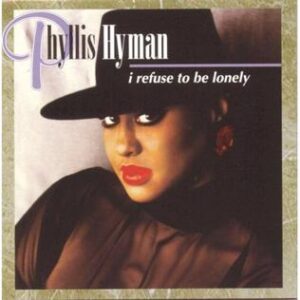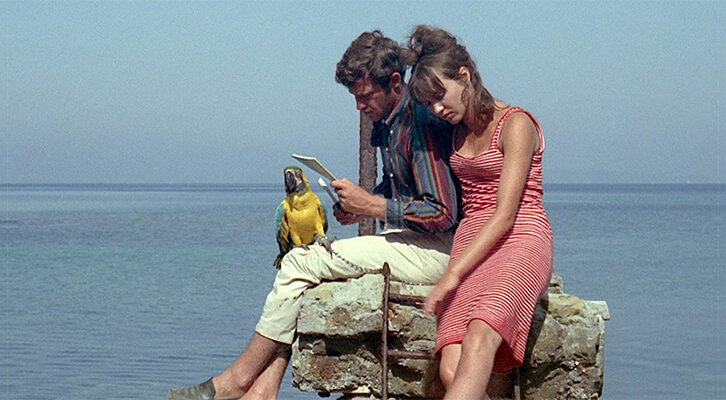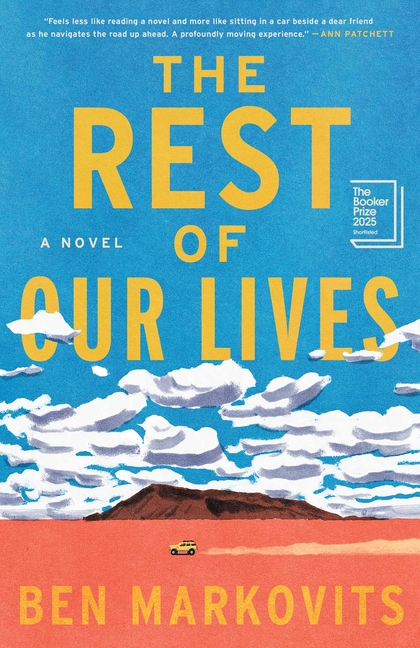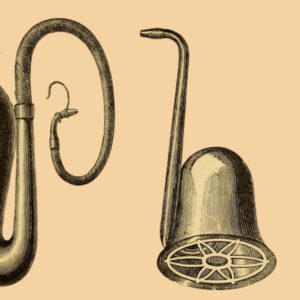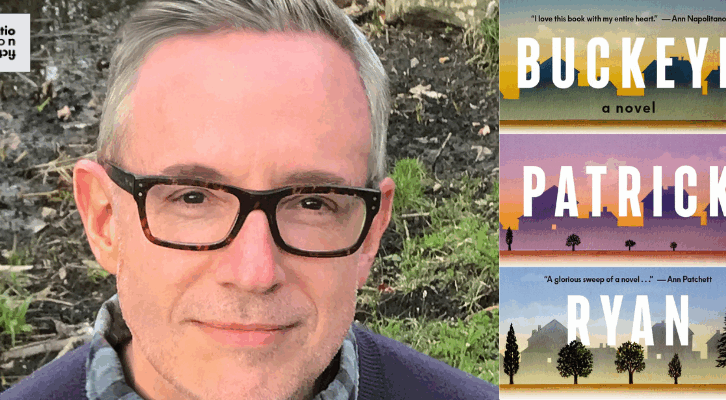
Patrick Ryan on The Good Heart of Buckeye
In Conversation with Whitney Terrell and V.V. Ganeshananthan on Fiction/Non/Fiction
Fiction writer and editor Patrick Ryan joins co-hosts Whitney Terrell and V.V. Ganeshananthan to discuss his debut novel, Buckeye, which traces two generations of two Midwestern families connected by a secret. Ryan recalls the coincidental conversation that informed his portrayal of one character’s experiences with disability in World War II-era Ohio, and reflects on taking Ann Patchett’s advice to keep the point of view very close when depicting experiences one hasn’t personally had. He explains how a spiritualist character became “the good heart of the book,” as well as his favorite fiction writing experience of all time. He also talks about troubling two fictional marriages and leaving his characters few paths through their woes. Ryan reads from Buckeye.
To hear the full episode, subscribe through iTunes, Google Play, Stitcher, Spotify, or your favorite podcast app (include the forward slashes when searching). You can also listen by streaming from the player below. Check out video versions of our interviews on the Fiction/Non/Fiction Instagram account, the Fiction/Non/Fiction YouTube Channel, and our show website: https://www.fnfpodcast.net/ This podcast is produced by V.V. Ganeshananthan, Whitney Terrell, and Moss Terrell.
Buckeye • The Dream Life of Astronauts • Send Me • Saints of Augustine • In Mike We Trust • Gemini Bites
Others:
Bel Canto by Ann Patchett • The Gilded Age
EXCERPT FROM A CONVERSATION WITH PATRICK RYAN
V.V. Ganeshananthan: As listeners to this podcast might know, about four years ago, I developed a set of chronic hand injuries, and I now identify as a disabled person, and I’m trying to catch up with my disability reading and how I think about that, etc. It was fascinating to read about Cal as a disabled character, and think about the challenges of writing about disability in this era, how all the language for that would be different, and from a craft perspective, how you would do that. Can you talk a little about how you thought about that? His interiority is so vividly captured and of its time and yet also sensitive in the ways that I, as someone with a disability, want it to be.
Patrick Ryan: It’s really easy for most of us, to, if we’re of a certain age, to remember a time very recently where anybody with any kind of disability was a freak. The mentality was there toward the way people were regarded and treated. I knew full well how Cal would be treated if he were walking this way, and I knew that would start in childhood, of course, starting in grade school, because that’s where all evil begins and and then just carries on into life. I had wanted to give him this quality, and then shortly after, I started tinkering with writing about it.
I had this conversation with an intern at my job. I don’t even remember why he brought it up, but I had already written the sentence. It had been in place for months, that first sentence: “He was born with one leg two inches shorter than the other,” and my intern said, “Well, the thing is, I have to go in for this procedure because I was born with a leg that was a couple inches shorter than the other, and I am having the second surgery to do this thing.” And he knew the whole history, and my mouth just dropped open because I said, “Let me show you something.” And I brought it up on my phone, the document, I said, “That’s the first sentence of my novel, and you just basically said it to me,” and so he gave me a lot of great information about what it was like for him as a kid, when he was trying to have a shoe that would compensate for this, and the different responses he would get from not just from doctors, but from people out and about.
Then the other thing I tried to do, there’s a really dramatic scene in this book—this is not connected, but it is—there’s a really dramatic scene later on that happens on a ship. It’s something that I clearly have not experienced myself, and I had to just fictionalize it. I approached Ann Patchett, who’s my best pal, and I said, “Okay, you wrote that scene in Bel Canto where everybody is getting shot up and you clearly have not been shot up, and you haven’t been in a room like that. How did you do it?” And she said that she did it by just keeping the perspective close in every single instant. Whatever character it is, just reel in very close to their own personal experience, almost like following them with blinders and that was how I approached getting into functioning in the world in this time period. I hadn’t lived in that. I was just researching, but I kept everything very, very close and intimate to him, and tried to avoid commenting from the outside on how people were regarding it medically, because I also didn’t think Cal would have any access to that. These were not people who would be going in and getting regular medical updates at all. His father just makes him a shoe out of an old tire, you know, to compensate for its height.
VVG: That’s a great craft tip.
Whitney Terrell: So I want to talk a little bit about Becky, who Cal marries, and who, as we mentioned earlier, is a spiritualist, or someone who has the power to connect with the dead. This is not a magical realist novel, right? This book is very Midwestern matter-of-fact, and yet she stands out in that way. Did you know originally that this was going to be a major plot point of the book? At what point did she develop into the character that she is? Maybe you could just talk a little bit about that spiritualism. There’s a history of it, obviously, and you do actually talk about that, and you have these publications, and people from magazines come to visit her, and I assume that all was researched. But how did you bring this into the book?
PR: This is my favorite fiction writing experience I’ve ever had, writing that character, because I have, for the most part, no interest in writing about something like a seance. I never thought I would write a seance scene in my life. I had no intention of writing about ghosts, because I feel like that’s something in fiction that’s either done really well or done sloppily, and I wasn’t going to go there. But I knew when I had these two people meet—and they were going to meet in their early 20s, and then they were going to get married—I wanted to give her a quality that her future husband was going to look sideways at and not understand, and and everybody in her life was going to look sideways at and not understand. My first thought for that was just, I wanted to make her really interesting to me. I wanted her to just be different from other characters and the thing that I landed on was this memory. She has a memory of when she was a child, and she hears this voice in her head, and it’s somebody who died and it turns out that it seems that that really happened, and the community freaks out about this memory that she’s having.
After I wrote that, I thought, “Okay, so that’s her thing”—this is my process—“that’s her thing. She believes that she can do that. And so where might that go in this narrative?” But then, really quickly, I reset my thinking, and I thought, “I’m not going to do this to her and set her up just to be ridiculed or just to be amusing, to be quirky.” I get to know my characters, and then I want to bend over backward to be true to them. That’s one of my limitations, because it slows me down a lot in figuring out their story arcs. But one of the things with her is I thought, “Nope, she can do it.” I just decided that one morning, “She can do this, and I don’t even know how, and I don’t think she’s going to know how, and I don’t think she’s going to know why, and that’s going to be part of her journey.” I do think that she is the good heart of the book. She’s the most unusual, but she’s the least conflicted in the book.
WT: It’s interesting. It took me a while to figure that out, because I was on Cal’s side. I’m like, “This is bullshit, man. You’ve got to get her off of this spiritualist crap, get her on to something practical. Can’t she garden?”
PR: You’re trying to, like, repaint your new house and then your spouse says, “Can you sit with me and talk to the ghost of Nikola Tesla for a few minutes?”
WT: Like, “Oh no. I made a mistake. I need some marriage counseling. Come on.”
PR: Yeah. And then it was really fun for me. I got lucky. Sometimes, when you write fiction, you don’t know how much of it was luck and how much of it was your foresight and your brilliance. I feel like a lot of it is luck. But in having her have that memory as a child—and then I wove in a little bit of her flashback to her parents talking to her about that and saying, “Don’t do that anymore. Just don’t, don’t hear from dead people anymore”— then I was able to have, when Cal, who’s then married to her, is talking to his father-in-law, and trying to get some assistance, “Hey, you. You raised her”—this is the subtext—“You raised her. I’m finding out that she’s into all this stuff. Can you maybe give me some pointers for how to deal with it?”
And his father-in-law’s message is basically, “Oh no, you married her. Now she’s yours.” I liked that balance of showing the reader how people regard her, which is not kind when she’s not in the room, but, but I wanted the reader to come to identify with her and see that she’s a wonderful person who is just trying to use this weird ability she has for good.
VVG: You called her the good heart of the book, and she is so good and and in a way, I think of her ability as a kind of disobedience that I admire. It’s the way that she doesn’t play by the rules. For those of our listeners who might be watching The Gilded Age, there’s a spiritualist moment where the character, played by Cynthia Nixon, is trying to contact her late husband. There’s a spiritualist in that show, and you take a different path, because that spiritualist doesn’t seem to be an unkind person, but is —spoiler alert, for those who haven’t seen this yet—the spiritualist is a con artist and is taking advantage of grief.
Here, what Becky does is exactly the opposite. It’s this embrace of the spiritual world and a belief in it that really buoys the book, which is a fascinating relationship with history. Before, you mentioned Cal’s father-in-law, and then Becky’s mother also makes some appearances. Cal is married to Becky, and Cal has this affair and so one of the things that this book is about, among other things, is marriage. How did you think about the marriage arcs of this book? I’m asking this in a way that leaves the question of spoilers, gently, in your court.
PR: I knew from the beginning that they were two very distinct couples, and I knew they were going to have two very distinct arcs. What I had to do was get to know both of these couples very well before I brought them together in the narrative. So that’s how I ended up with this structure where I start the story at a moment, and then I actually back the reader up and bring them to that moment, and then I back them up again and bring them to that moment. I did not think that was strategically wise. I didn’t think it was a way to hook the reader in. I just couldn’t see any other way to do it, because I had to get to know both those characters on their own terms in a way that would mirror life, like you bring strangers together, and then you watch what happens with them, but everything that happens with them is determined by who they are when they get to that point.
I wanted to play one couple off the other in a way that just was so horribly complicated that there was no clear path through. I wanted to get the people into a situation where—and I’m trying not to give away any spoilers— all four of them were coming at their marriages from completely different perspectives, and nobody could join paths with anybody else to figure out how to make this work. All four characters are coming from different perspectives, and they don’t all make it to the middle to make things work. Some of them spin off and just can’t do it, but most of them do. Most of them do figure it out. It was a mystery to me from the beginning to the end, in terms of getting these people through their own dynamics and then the dynamic that they match together.
Transcribed by Otter.ai. Condensed and edited by Rebecca Kilroy. Photograph of Patrick Ryan by Fred Blair.
Fiction Non Fiction
Hosted by Whitney Terrell and V.V. Ganeshananthan, Fiction/Non/Fiction interprets current events through the lens of literature, and features conversations with writers of all stripes, from novelists and poets to journalists and essayists.









